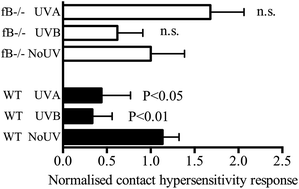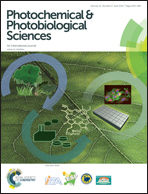The alternative complement component factor B regulates UV-induced oedema, systemic suppression of contact and delayed hypersensitivity, and mast cell infiltration into the skin
Abstract
Ultraviolet (UV) wavelengths in sunlight are the prime cause of skin cancer in humans with both the UVA and UVB wavebands making a contribution to photocarcinogenesis. UV has many different biological effects on the skin that contribute to carcinogenesis, including suppression of adaptive immunity, sunburn and altering the migration of mast cells into and away from irradiated skin. Many molecular mechanisms have been identified as contributing to skin responses to UV. Recently, using gene set enrichment analysis of microarray data, we identified the alternative complement pathway with a central role for factor B (fB) in UVA-induced immunosuppression. In the current study we used mice genetically deficient in fB (fB−/− mice) to study the functional role of the alternative complement pathway in skin responses to UV. We found that fB is required for not only UVA but also UVB-induced immunosuppression and solar-simulated UV induction of the oedemal component of sunburn. Factor B−/− mice had a larger number of resident skin mast cells than control mice, but unlike the controls did not respond to UV by increasing mast cell infiltration into the skin. This study provides evidence for a function role for fB in skin responses to UV radiation. Factor B regulates UVA and UVB induced immunosuppression, UV induced oedema and mast cell infiltration into the skin. The alternative complement pathway is therefore an important regulator of skin responses to UV.


 Please wait while we load your content...
Please wait while we load your content...